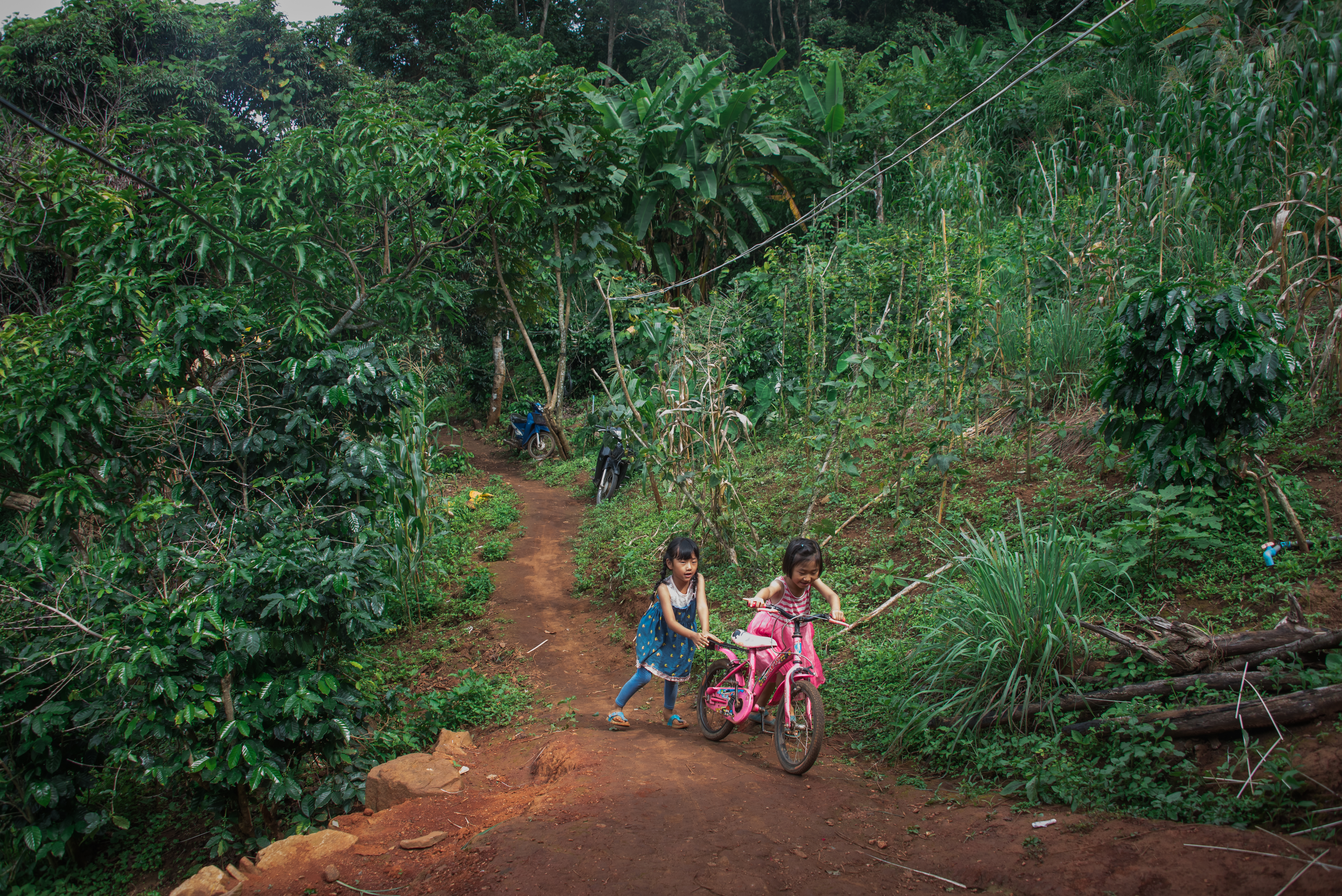Struggling to carry push their bicycle on the steep incline, two Hmong girls climb up a mountain to the wooden house where they and their families will spend the entire day kneeling on wooden floors, listening to the voice of their prophet. The heavy jungle weighs around them, seemingly swallowing the path as it recedes into the distance. Their parents are already inside the building, preparing to begin worship—their motorbikes parked in the distant foliage. The girls appear in bright colors
In this Northern Thai village, a small group of families would rise at early hours every morning to worship, pour over Biblical passages, and listen to the words of a man whose sermon was said to be directed by an angel. They had done this despite being met by derision, scorn, and ostracization from their neighbors, who had watched with confusion and disapproval as the Reformers began a strict vegan diet, quit their jobs, sold their farmland, and eschewed themselves of earthly belongings in order to prepare for Christ’s return, which they believed would happen within the next few years.
While outsiders looked upon these practices as bizarre, they described their new lifestyle as something which gave them closer access to divinity than they’d ever had before. The prophet and the rituals to which his followers adhered allowed his followers to reframe the world around them through experienced immanence and “enchantment” (Gell 1994)—the everyday world became more than “ordinary”—it became sublime. The rituals they upheld, such as abstaining from meat or dairy, allowed them to see God in the mundane choices they made, even in something as seemingly ordinary as meal selection. The time they spent kneeling and studying the Bible also allowed them to transform themselves closer to Christ. Their lives became rewritten through transcendent frameworks—the persecution they endured for choosing this lifestyle was experienced as a testament to the truth of their beliefs.
This photograph embodies the convergence of divine and sublim—the scene is expanded into a “praxis capable of making the other present” (Fabian 1990). The girls are members of a religion which separates them from the rest of the village, who view them as outsiders—and the Reformers proudly embrace that role. They are living among the “fallen” world, but actively choosing to follow rituals which they believe elevate them closer to a heavenly state, just as the two girls dressed in bright colors are in the depths of the jungle, but visually separate from the dark, dense maze of foliage. They remain untouched by the greenery—they see their path set out clearly ahead of them and maintain their childlike playfulness, reminiscent of photographer Helen Levitt’s whimsical and witty portraits of children playing games amongst the concrete jungle of New York City. There is a sense of “enchantment” to the photograph— the brightly dressed girls oblivious to the visual and social turmoil around them, but certain of the path upon which they tread.
Gell, A. (1994). ‘The Technology of Enchantment and the Enchantment of Technology’. In
Coote. J. (Ed.) Anthropology, Art, and Aesthetics. Oxford: Clarendon Press.
Fabian, Johannes. “Presence and Representation: The Other and Anthropological Writing.”
Critical Inquiry 16, no. 4 (1990): 753-72.

Commentary on Rachel Tanur's Works: Drag Queen 1